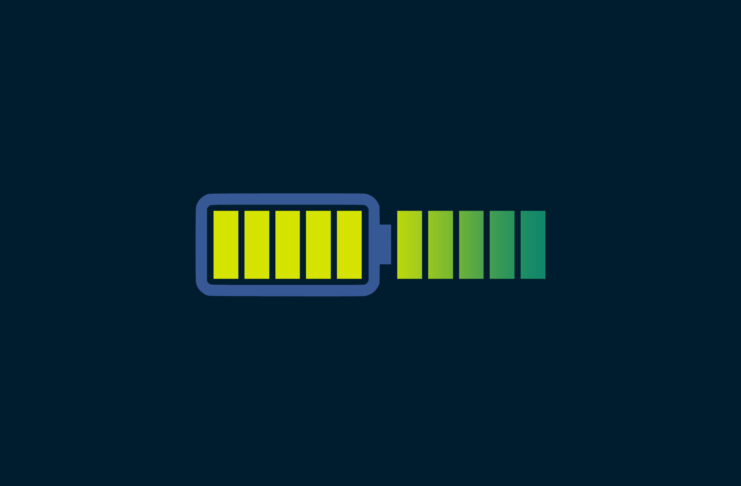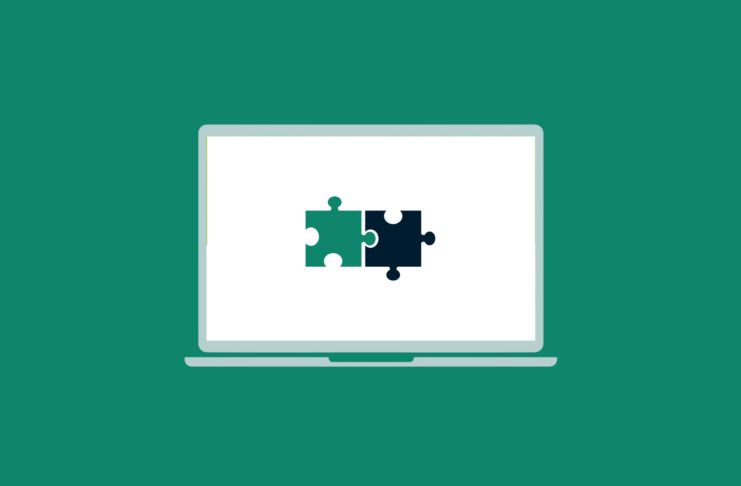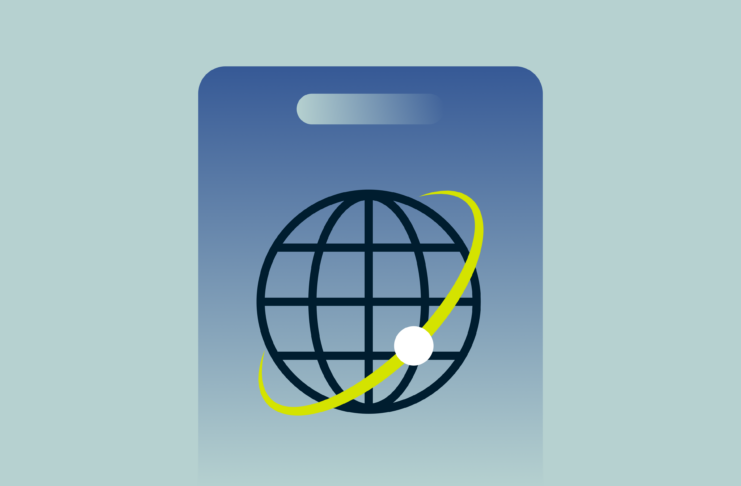When configuring your Wi-Fi, you might be asked to choose between DHCP and PPPoE. So what is the difference, and which one is better?
Should you choose DHCP or PPPoE?
Choosing the right network protocol—DHCP or PPPoE—largely depends on your internet service provider’s infrastructure and your specific network requirements. Typically, if your ISP uses DHCP, which is common for most modern home Wi-Fi networks, you should also use DHCP. This protocol is generally preferred for its simplicity and efficiency in handling network assignments.
However, if your home network demands more precise user management—or if your ISP requires it—you might need to use PPPoE. This protocol involves entering specific credentials provided by your ISP—allowing for secure point-to-point connections.
With ExpressVPN’s Aircove and Aircove Go routers, you have the flexibility to easily switch between DHCP and PPPoE, adapting to whatever protocol your ISP supports. These routers facilitate straightforward network configuration and enhance your network’s security with top-tier VPN protection.
That’s the short answer. Below, we go into much greater detail about what each protocol does.
What is DHCP (Dynamic Host Configuration Protocol)?
Commonly used by modern broadband services, DHCP, or Dynamic Host Configuration Protocol, is a network management protocol that dynamically assigns an IP address and other network configuration parameters to a device. DHCP automates and centrally manages these configurations rather than requiring network administrators to assign IP addresses to all network devices manually.
How does DHCP work?
DHCP operates through a four-step process known as DORA (Discover, Offer, Request, Acknowledge):
- Discover: When a device connects to a network, it broadcasts a DHCP discover message to identify any available DHCP servers.
- Offer: Any DHCP server on the network responds to the discovery with a DHCP offer message. This message includes a proposed IP address for the device, the network subnet mask, the duration of the lease the device can keep that IP address, and other networking details such as DNS server addresses.
- Request: The device responds to the offer that best suits its requirements with a DHCP request message, formally requesting the offered parameters.
- Acknowledge: The DHCP server sends a DHCP acknowledgment message to the device. This message confirms the leased IP address and other configuration details. The device can now communicate on the network using the provided settings.
This process allows devices to join and leave the network with minimal configuration, easing network management and maintaining efficient use of IP addresses.
3 DHCP mechanisms for assigning IP addresses
DHCP offers flexibility in how IP addresses and network configurations are assigned to devices on a network. There are three primary mechanisms through which DHCP can assign IP addresses: automatic allocation, dynamic allocation, and manual allocation. Each serves different network requirements and policies:
Automatic allocation:
In automatic allocation, DHCP permanently assigns an IP address to a device from a pool of available addresses. Once a device receives an IP address via automatic allocation, it retains that address indefinitely unless the network administrator intervenes or the device is removed from the network. This method is useful for networks where devices need a consistent IP address that does not change over time.
Dynamic allocation:
Dynamic allocation is the most commonly used method of IP address assignment. In this mechanism, DHCP assigns an IP address to a device for a limited period or until the device disconnects from the network. This is known as leasing. The IP address can be reassigned to the same device upon reconnection or assigned to a different device if the original device does not renew its lease. Dynamic allocation is efficient for managing IP addresses in environments where devices frequently connect and disconnect from the network, such as in wireless networks or temporary setups.
Manual or static allocation:
This method manually assigns a specific IP address to a device while still using DHCP to convey this information. The network administrator assigns each IP address to each device, and DHCP is used merely to deliver these pre-defined addresses to the devices.
These mechanisms allow DHCP to be versatile and adaptable to different network sizes, policies, and needs, providing a range of options for network administrators to manage their IP resources effectively.
What is PPPoE (Point-to-Point Protocol over Ethernet)?
Now considered an outdated technology, PPPoE stands for Point-to-Point Protocol over Ethernet. It allows multiple computer users to share a single broadband connection while providing each user with a distinct network identity and data path. This technology came about to allow ISPs to connect multiple devices to the same server, making it possible to provide internet to more people.
How does PPPoE work?
PPPoE creates a direct connection between two network nodes: typically, a personal computer on one end and a broadband modem on the other. This connection is established through a series of steps:
- Discovery: PPPoE begins with the PPPoE Discovery stage, where the client locates the Ethernet address of the remote server, usually the access concentrator, at the internet service provider’s end. Both parties exchange PPPoE Discovery packets during this phase to establish a PPPoE session ID.
- Session establishment: Once the Discovery phase is completed, the session phase begins. The client sends a request packet to the server to initiate a session. The server then responds with a session confirmation.
- Data transmission: After establishing the session, data can be transmitted using the PPP protocol encapsulated within PPPoE headers. This allows the PPP session’s data to travel over an Ethernet connection.
This method provides a secure and private connection by establishing a unique session ID for each user, ensuring each connection is distinct and separately managed.
Major differences between DHCP and PPPoE
DHCP and PPPoE serve distinct roles in managing network connections and internet access. Their differences lie in various aspects of network management and can influence the protocol choice depending on the specific network needs.
Comparison table: DHCP vs. PPPoE
| Feature | DHCP | PPPoE |
| Configuration | Automatic IP configuration | Manual setup is required for each connection |
| Speed | Faster IP assignment | Slower due to authentication |
| Authentication | None intrinsically; relies on network security | Built-in authentication mechanisms (PAP, CHAP) |
| Usage scenarios | Any network requiring dynamic IP management | Networks requiring authenticated access |
| Security | Basic, dependent on additional network protocols | Higher, with authentication for each user |
| Purpose | Simplify IP management across various devices | Secure point-to-point connections with authentication |
Why is PPPoE still used sometimes?
DHCP is more commonly used and easier to set up. But PPPoE is sometimes used because it is better for specific networking needs. Here are the main reasons why PPPoE is sometimes used:
- User authentication: One of the primary reasons for using PPPoE is its ability to support user authentication, as PPPoE allows ISPs to manage user access individually.
- Session management: PPPoE supports creating and managing multiple sessions over a single physical connection. This is particularly useful in multi-user environments where users need a separate network identity.
- Network control and management: Mostly for ISPs and large organizations, PPPoE provides greater control over the network services and user connectivity. Since each PPPoE session can be individually controlled, it allows for better bandwidth allocation and service quality management.
- Compatibility and integration: PPPoE is widely supported by many networking hardware and software types, making it a flexible option for integrating into existing architectures without requiring significant changes.
- Scalability: PPPoE scales well from small to large networks. Its ability to handle numerous individual connections efficiently makes it suitable for growing networks requiring robust management and authentication capabilities without significantly increasing complexity.
Which is better: DHCP or static IP?
If your Wi-Fi settings ask you to choose between DHCP and static IP, unless you have specifically requested and paid for a static IP service, you’ll be using DHCP.
DHCP dynamically assigns IP addresses, meaning it gives your device a different one each time you log on to the internet. Some people prefer to have a static IP—one that doesn’t change. Here’s why.
Advantages of DHCP
- Ease of management: DHCP automates the IP address configuration process, which can significantly reduce the administrative overhead of managing many network devices. It’s particularly beneficial in environments where devices frequently join and leave the network, such as businesses with mobile devices or guest Wi-Fi networks.
- Flexibility: DHCP allows for easy allocation and reallocation of IP resources. It can dynamically assign whatever IP address is available, efficiently using the IP address pool.
- Scalability: DHCP is ideal for scaling up networks quickly without manually configuring each new device.
Advantages of static IP
- Consistency: A static IP address remains the same over time, which is crucial for network infrastructure devices like servers, printers, or any device that needs to be reliably accessed by the same IP address, such as for hosting websites or services.
- Network stability: Static IPs eliminate the risk of IP address conflicts or downtime with DHCP if not adequately managed. This stability is crucial for critical applications and services.
- Simplified troubleshooting: Because IP addresses remain consistent, diagnosing network problems can be easier with static IPs, as the network configuration is predictable and straightforward.
Ultimately, choosing between DHCP and static IP should align with your network’s operational requirements and administrative capacity. However, it’s usually best to stick to DHCP for a small office or home setting.
FAQ: About PPPoE vs. DHCP
Are IPoE and DHCP the same?
No. IPoE (IP over Ethernet) and DHCP (Dynamic Host Configuration Protocol) are different. IPoE is a network connection method that transmits IP packets directly over an Ethernet layer without additional encapsulation, focusing on the connection type.
On the other hand, DHCP is a protocol used for dynamically assigning IP addresses and other network configuration parameters to devices on a network. While both involve IP addressing, their functions and methods of operation are distinct.
Can I change PPPoE to DHCP?
It is uncommon to be able to switch back and forth between the two. You should choose whichever one your internet service provider supports.
What connection type is IPoE?
IPoE is a connection type that provides IP connectivity over Ethernet. Unlike PPPoE, IPoE does not use PPP encapsulation and does not require session establishment or authentication phases. It is typically used in networks where simplicity and speed are preferred over the need for the authentication procedures provided by PPPoE.
How do I find my PPPoE IP address?
To find your PPPoE IP address, you should check the status section in your router or modem’s configuration interface. Most routers will have a web-based interface where you can log in and view the status of your network connections, including the PPPoE session. The PPPoE IP address and other connection details, such as the status, duration, and data usage, are often displayed.
How do I set my PPPoE on my router?
Setting up PPPoE on your router typically involves these steps:
- Access the router’s web-based setup page: Usually by entering the router’s IP address in a web browser.
- Navigate to the setup or WAN settings section: Look for menus labeled “Setup”, “Internet”, or “WAN”.
- Select PPPoE as the connection type: This option might be under “Connection Type” or “Encapsulation”.
- Enter the username and password provided by your ISP: This information is required to authenticate the connection with your ISP’s server.
- Save the settings and restart the router if necessary: Click “Save”, “Apply”, or a similar button. Restart the router if prompted.
The exact steps can vary depending on the router model, so it’s advisable to consult the router’s manual or support site for specific instructions related to your hardware.

Take the first step to protect yourself online
30-day money-back guarantee


























Comments
Bonjour,
Je n’arrive pas a changer mon mot de passe, je ne recoit pas la facon de faire par mon courriel